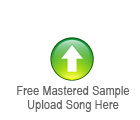Analog vs digital mastering. Which is better? What is the difference?
Analog mastering uses physical, outboard mastering gear to process the mix. Digital mastering uses software.
Analog mastering will introduce a sound into the recording which is generated from the analog circuitry of the equipment. It will thicken the recording and all the instruments within it, often times accentuating upper harmonic. It’s add a new element to the recording, a new sound that did not exist before. It is a fantastic solution to mixes that have space, where all the instruments are well separated and all can be well interpreted in the mix.
To the contrary, when there is a mix that is well-blended, and instruments are not readily identifiable, and use a blend to create a sound or feel, than analog mastering may not be the best choice. It has the potential to blend (or muddy) the sound that is outside of the intention of the artist. In these cases I will refer to a digital solution. With digital mastering, software is utilized that does not introduce a “sound” into the mix. It can only manipulate the “sound” that is already in the mix. In many cases, the software will act very close to its analog counterpart that it is replicating. However, the software does not lend a sound like a physical piece of mastering hardware. Because of this distinction, the processed mix is quite a bit cleaner. It will not “muddy” or widen the sound in the same respect. It is much more transparent.
I will almost always defer to an analog mastering process when mastering anything with acoustic instrumentation such as guitars, strings, mandolin, banjo, etc. Instances where the instruments need to “shine.” If I am dealing with certain pop music which uses heavy blends of keyboards and synths or synth pads then I may experiment a digital solution.
In some instances I have mastered digital and analog hybrids. For example, I may want to incorporate the sound of an SSL bus (mastering compression) but keep the mix very clean. Therefore I may decide to leave out a tube-driven equalizer. Or maybe use a digital compression solution while simply “running” my mix through an analog compressor without processing the dynamics.
Contact Andrew Mitchell with any questions and/or comments:
andy@audiobaymastering.com


Comments are closed.